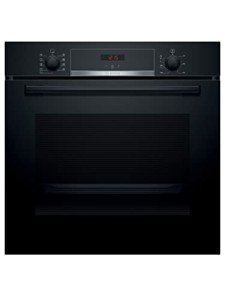What Are The Biggest "Myths" Concerning Oven Built In Could Be A Lie

The Rise of Built-In Ovens: A Seamless Approach to Modern Cooking
In modern kitchens, where style aesthetics mix seamlessly with functionality, one appliance stands apart as a real game changer: the built-in oven. As house owners and chefs alike continue to seek ingenious services that enhance their cooking experience, built-in ovens have ended up being significantly popular. This post checks out the advantages, factors to consider, and trends surrounding built-in ovens, highlighting why they are an important feature in modern-day cooking areas.
What is a Built-In Oven?
A built-in oven is a kitchen area device designed to be integrated into the kitchen cabinetry of a cooking area rather than standing alone. Unlike traditional freestanding ovens, which can be moved and placed anywhere, built-in ovens come in various styles and sizes to fit particularly within designated spaces. Readily available in single or double configurations, these ovens provide a streamlined look that complements modern kitchen area styles.

Advantages of Built-In Ovens
1. Space-Saving Design
One of the most enticing advantages of built-in ovens is their space-saving design. By integrating the oven into kitchen cabinetry, you can maximize valuable counter and floor space. This is particularly helpful in smaller sized kitchen areas, where taking full advantage of room is essential. Built-in ovens can be installed at eye level, making them more accessible and lowering the requirement to bend down.
2. Visual Appeal
Built-in ovens add to a smooth and cohesive cooking area design. Readily available in numerous finishes-- such as stainless-steel, black, white, and custom-made kitchen cabinetry-- they can mix seamlessly into the overall decoration. This visual appeal boosts the kitchen area's visual harmony and raises the space, producing a modern and advanced environment.
3. Improved Highly recommended Web-site built-in ovens come equipped with sophisticated cooking technologies, such as convection cooking, steam ovens, and clever functions. These improvements enable versatile cooking options, making it much easier to attain professional-level outcomes in the house. Smart built-in ovens can even connect to Wi-Fi, allowing users to manage the oven from another location, get notices, and gain access to a range of cooking programs and recipes.
4. Improved Ventilation
Because built-in ovens can be integrated with kitchen hoods and ventilation systems, they can assist keep better air quality and reduce cooking smells. This is especially significant for those who enjoy to cook with fragrant spices and active ingredients, as a reliable ventilation system can keep the kitchen comfortable and welcoming.
5. Personalization Options
Built-in ovens use a vast array of personalization options to fit specific cooking styles and requirements. From professional-grade devices with several cooking modes to compact designs for smaller sized cooking areas, house owners can select the oven that fits their specific requirements. Numerous manufacturers also provide personalized front panels, permitting you to match the oven's appearance to your cabinetry for a really unified look.
Factors to consider When Choosing a Built-In Oven
While built-in ovens have numerous benefits, there are necessary considerations to remember before buying:
1. Price
Built-in ovens typically include a higher rate tag than their freestanding counterparts due to their style and setup requirements. It's important to consider both the expense of the oven and any extra costs related to cabinets adjustments or setup.
2. Setup Requirements
Setting up a built-in oven typically needs expert support, especially if you need to modify existing cabinets. Guarantee that you think about any costs associated with installation, including labor and potential kitchen cabinetry changes.
3. Size and Dimensions
Before buying a built-in oven, determine the designated area precisely to guarantee a proper fit. Built-in ovens been available in different sizes and configurations, so selecting one that aligns with your needs and cooking area style is vital.
4. Lifestyle and Usage
Consider your cooking practices and needs when choosing a built-in oven. If you often host large gatherings, a double oven might be more useful. On the other hand, if you have a compact kitchen area, a single-wall oven may be sufficient.
Trends in Built-In Ovens
The kitchen area appliance market is continually evolving, and built-in ovens are not exempt from emerging trends. Some present patterns consist of:
Smart Technology Integration: With the rise of wise home innovation, built-in ovens now frequently feature connection alternatives. This allows users to monitor cooking development and adjust settings via mobile apps.
Energy Efficiency: As sustainability ends up being a concern, numerous manufacturers are investing in energy-efficient built-in ovens that minimize energy usage while keeping performance.
Multi-functional Designs: Built-in ovens now provide features such as air frying, sluggish cooking, and steaming, supplying versatility that fulfills a vast array of cooking approaches.
Conclusion
Built-in ovens unquestionably represent an ideal mix of style, function, and convenience in today's kitchens. As more property owners choose this modern-day solution, the focus shifts to producing a cooking area that is as visually pleasing as it is useful. Whether you are constructing a new home or remodeling your kitchen area, considering a built-in oven might raise your cooking experience and transform your cooking area into a trendy and practical sanctuary. With a variety of choices readily available and continuous innovations in innovation, built-in ovens stay a standout choice for both newbie cooks and culinary enthusiasts alike.
